‘Welcome to the moon’ – but not for long after sideways landing
The first ever privately owned spacecraft put the US back on the moon for the first time in 52 years – but the lunar lander is set to stop working ahead of schedule after it came to rest on its side
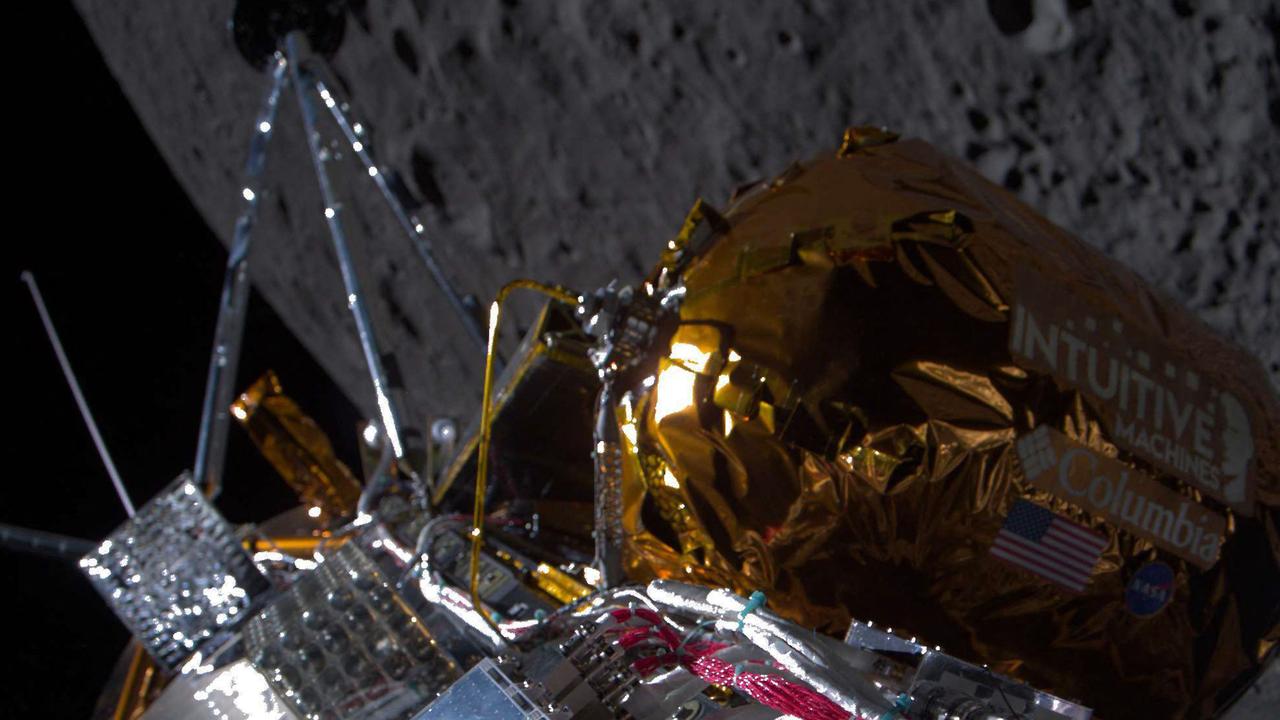
READING LEVEL: ORANGE
UPDATE
The private US lunar lander Odysseus is expected to stop working on Tuesday, its mission cut short after it landed sideways near the south pole of the moon.
Intuitive Machines, the American company that built and flew the spacecraft, said Monday it would continue to collect data until sunlight stopped shining on the solar panels. Based on the position of Earth and the moon, officials expect that to happen two to three days short of the week or so that NASA and other customers were counting on.
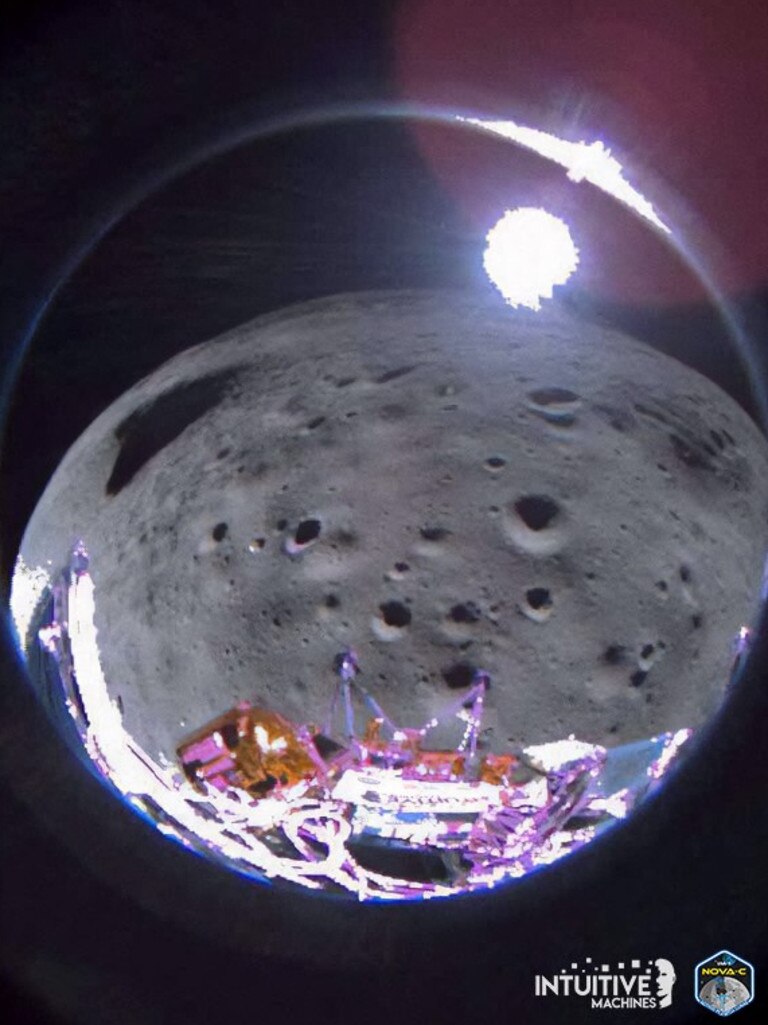
Odysseus is the first US spacecraft to land on the moon in more than 50 years, carrying experiments for NASA, the main sponsor. But it came in too fast last Thursday and the foot of one of its six legs caught on the surface, causing it to tumble over, according to company officials.
Based on photos from NASA’s Lunar Reconnaissance Orbiter flying overhead, Odysseus landed 1.5km or so of its intended target near the Malapert A crater, just 300km from the moon’s south pole.
According to NASA, the lander ended up in a small, degraded crater with a 12-degree slope. That’s the closest a spacecraft has ever come to the south pole, an area of interest because of suspected frozen water in the permanently shadowed craters there.
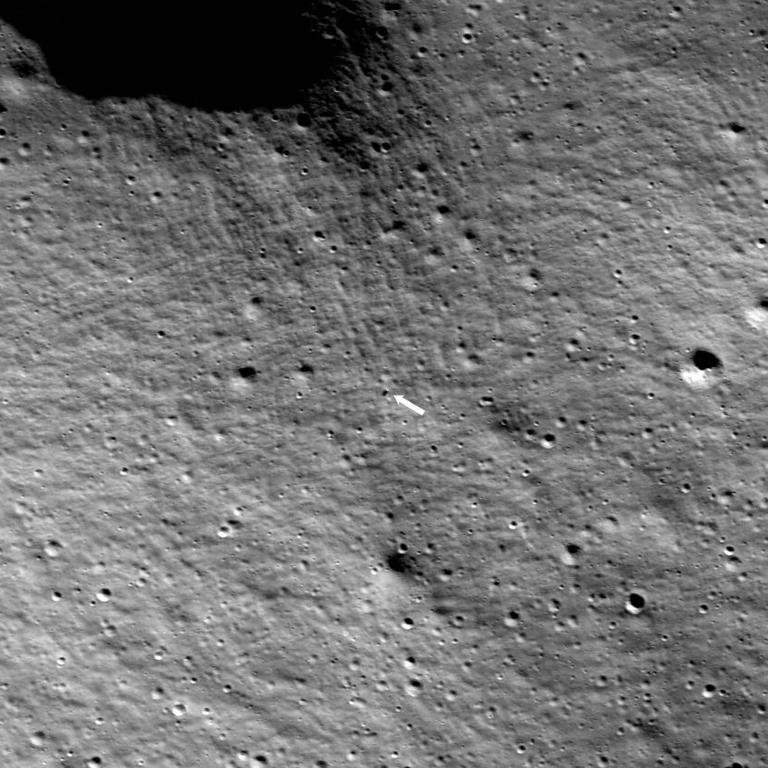
NASA, which plans to land astronauts in this region in the next few years, paid Intuitive Machines $118 million to deliver six experiments to the surface. Other customers also had items on board.
Not landing upright has hampered communication with Earth. Some antennas were covered up by the toppled lander, and the ones still exposed ended up near the ground, resulting in spotty communications. The solar panels also ended up much closer to the surface than anticipated, less than ideal in the hilly terrain. But had the landing been perfect, Odysseus still only had a week to operate on the surface before the long lunar night set in.

WATCH THE VIDEO
HOPES HIGH AFTER LANDING CONFIRMED
The first ever private spacecraft has landed on the moon after rocketing off from Earth last week.
The unmanned Odysseus lunar lander touched down on the lunar surface six days after it was launched from the Kennedy Space Center in Florida.
Odysseus descended from its close orbit around the moon and guided itself toward the surface, searching for a relatively flat spot among all the cliffs and craters near the south pole.
US business Intuitive Machines became the first private company to achieve a moon landing after a previous attempt by another business failed.
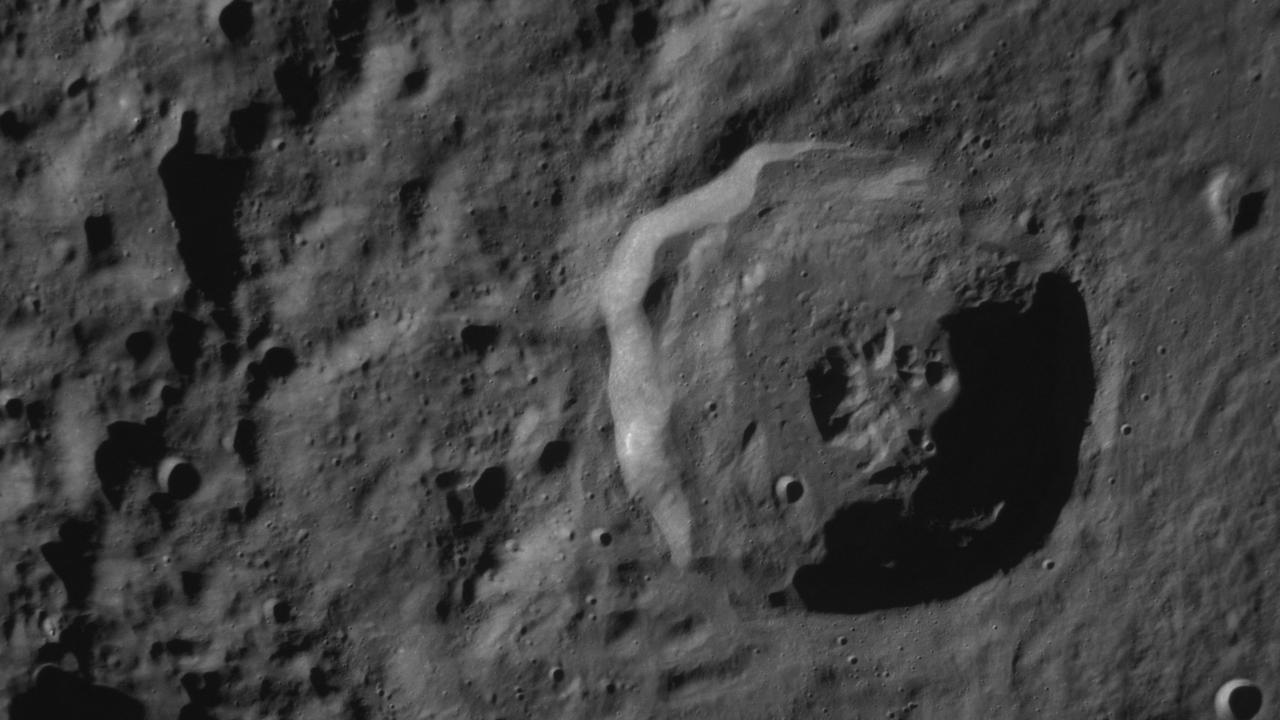
The landing also marked the first time the US had reached the moon’s surface in 52 years.
Due to a problem with the craft’s communication system, owner Intuitive Machines was not able to give an idea of the lander’s exact location or the condition it was in when it landed.
Signals from the craft were weak as it touched down near the moon’s south pole, making for a tense 10 minutes as controllers waited for a signal to arrive.
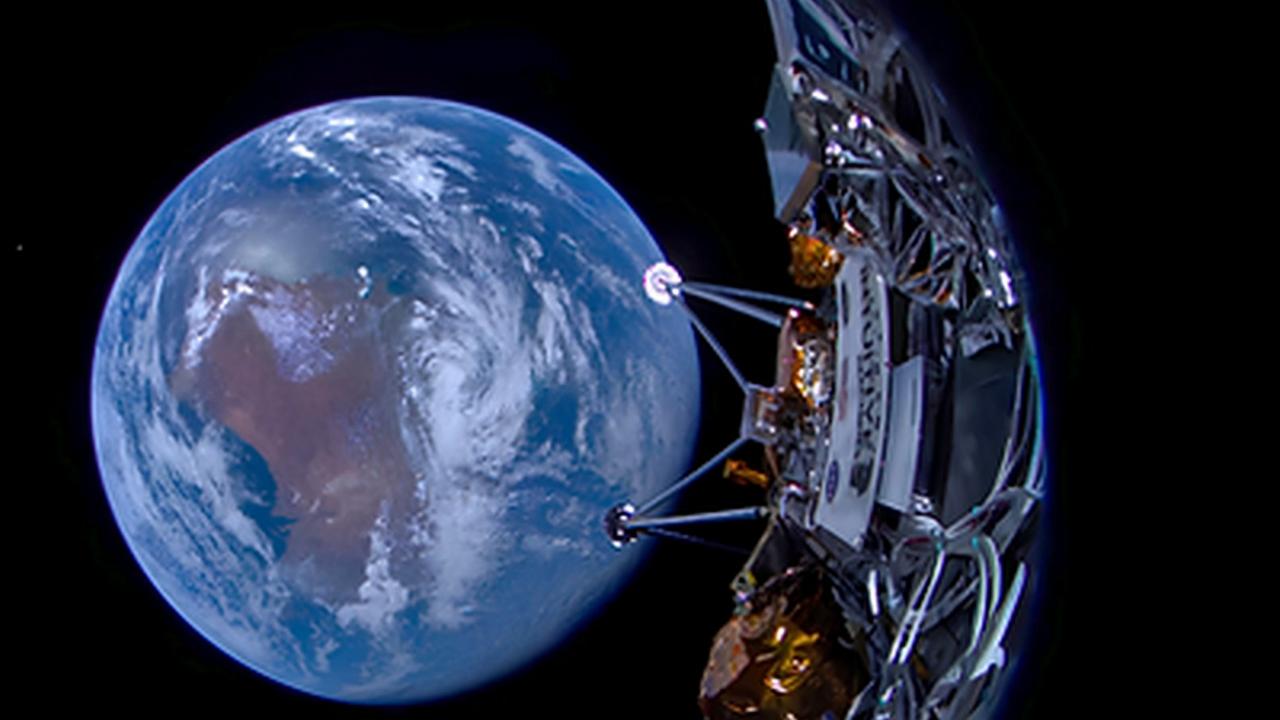
“We’re evaluating how we can refine that signal,” said mission director Tim Crain. “But we can confirm, without a doubt, that our equipment is on the surface of the moon.”
Intuitive Machines CEO Steve Altemus said, “I know this was a nailbiter, but we are on the surface and we are transmitting. Welcome to the moon.”
The last time the US visited the moon was in 1972, when Apollo 17’s Gene Cernan and Harrison Schmitt left the last bootprints in the moon’s grey dust and NASA stopped its lunar missions.
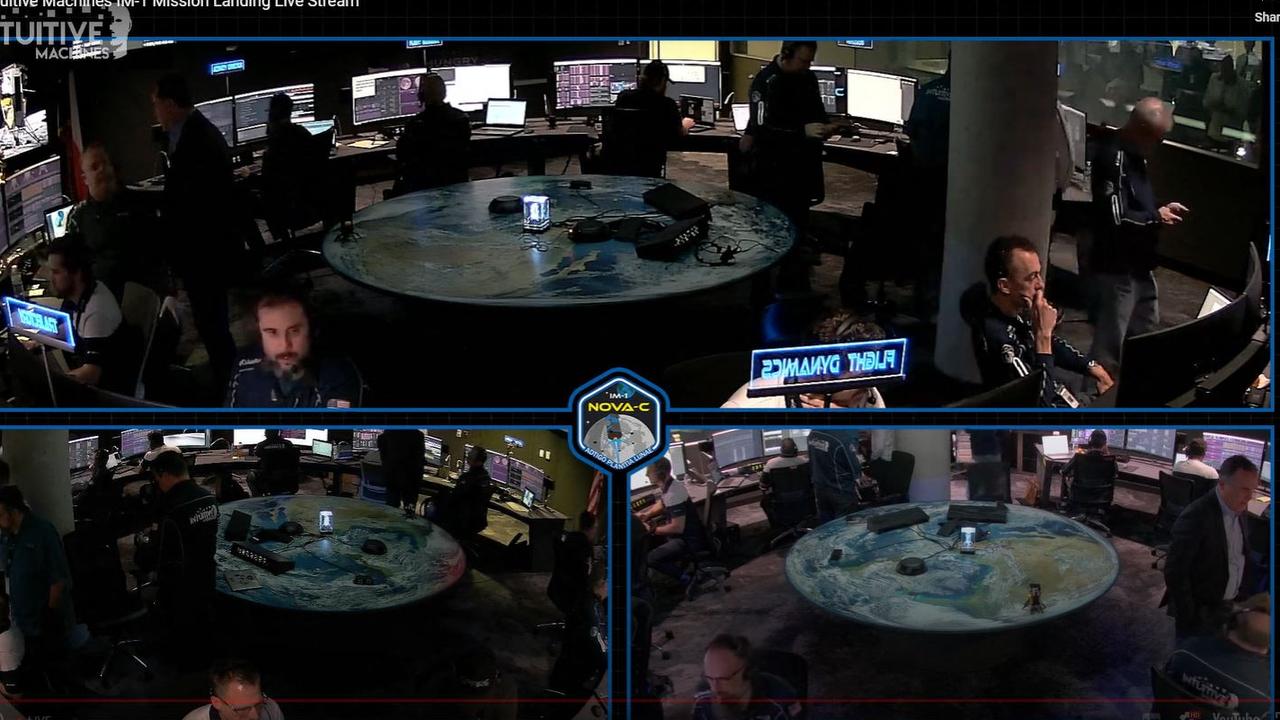
Intuitive Machines’ target was 300km from the south pole, around 80 degrees latitude and closer to the pole than any other spacecraft had gone.
The site was relatively flat, but surrounded by boulders, hills, cliffs and craters that could hold frozen water – something the company wanted to explore.
The lander had been programmed to pick, in real time, the safest spot near the so-called Malapert A crater.
The solar-powered lander is expected to operate for a week, until the long lunar night.

HISTORY OF MOON LANDINGS
Intuitive Machines’ landing is the latest in a series of attempts by countries and private companies looking to explore the moon.
The moon is littered with wreckage from failed attempts – but some don’t make it that far.
Private company Astrobotic Technology tried to reach the moon for a landing attempt as recently as January. Its craft was unable to get there because of a fuel leak that sent the lander plunging back through Earth’s atmosphere.
FIRST LANDING
In 1966, the Soviet Union’s Luna 9 was the first craft to ever land on the moon. Four months later, US craft Surveyor 1 achieved touchdown. Both countries went on to achieve more robotic landings before racing to become the first country to send humans to the moon.
USA
NASA won the space race against the Soviets in 1969 with a moon landing by Apollo 11’s Neil Armstrong and Buzz Aldrin. The US sent 12 astronauts to explore the surface of the moon over six missions, before the program ended with Apollo 17 in 1972.
The only country to ever send humans to the moon, the US hopes to return crews to the surface by the end of 2026.
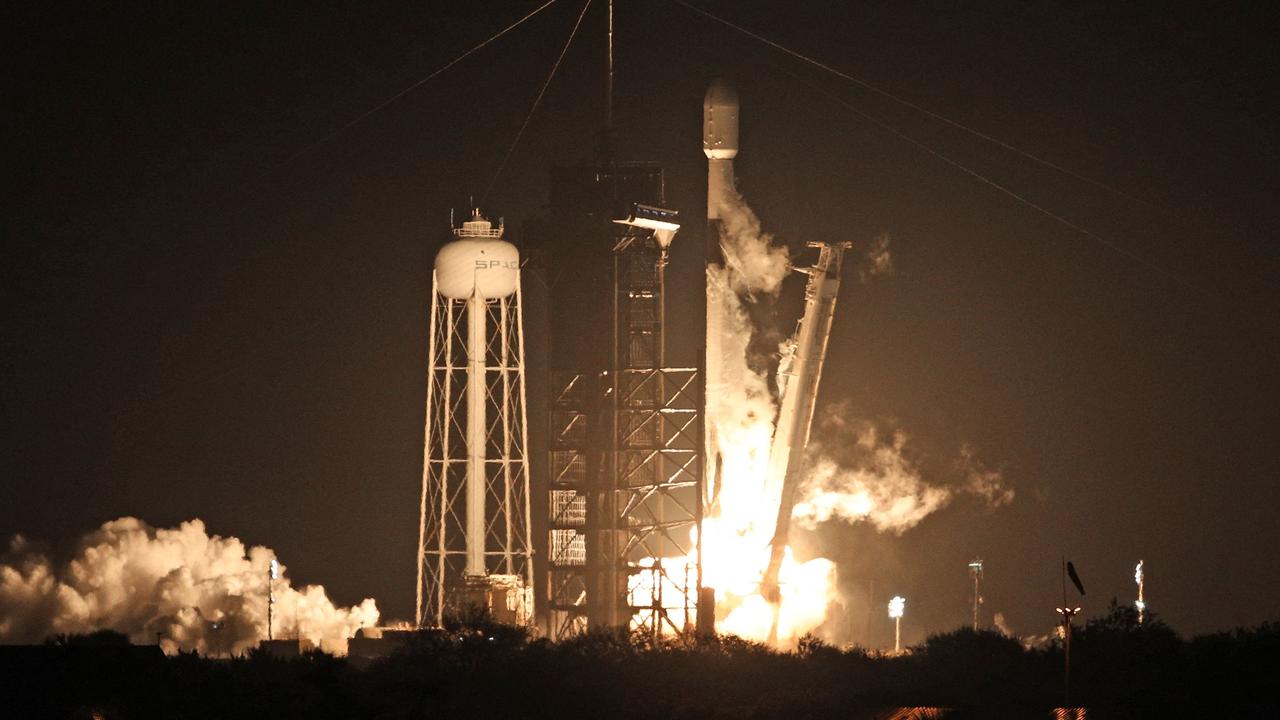
CHINA
In 2013, China became the third country to successfully land on the moon, delivering a rover named Yutu, Chinese for jade rabbit.
China followed with the Yutu-2 rover in 2019, this time touching down on the moon’s unexplored far side — an impressive first.
In 2020 China brought back a 1.7kg sample of lunar rocks and dirt.
China aims to put its astronauts on the moon by 2030.
RUSSIA
In 2023, Russia tried for its first moon landing in nearly a half-century, but the Luna 25 spacecraft smashed into the moon. The country’s previous lander — 1976’s Luna 24 — not only landed, but returned moon rocks to Earth.
INDIA
After its first lander slammed into the moon in 2019, India regrouped and launched Chandrayaan-3 (Hindi for moon craft) in 2023. The craft successfully touched down, making India the fourth country to score a lunar landing. The win came just four days after Russia’s crash-landing.
JAPAN
Japan became the fifth country to land successfully on the moon, with its spacecraft touching down in January. The craft landed on the wrong side and wasn’t able to generate solar power, but managed to send out pictures and science before falling silent when the long lunar night set in.
POLL
GLOSSARY
- unmanned: without humans on board
- refine: make clearer
- transmitting: broadcasting signals
- long lunar night: a period of about 14 days where the moon’s surface is not exposed to sunlight, making it dark and the temperatures drop
EXTRA READING
‘Cosmic hurricane’ has black hole heart
Rally to protect moon from our rubbish
Elon Musk: Rocket explosion won’t stall Mars mission
QUICK QUIZ
- When did the first humans step foot on the moon?
- How many countries have landed on the moon?
- When does China aim to send people to the moon?
- What year did India successfully land on the moon?
- When was the last time the US visited the moon?
LISTEN TO THE UPDATE
LISTEN TO THIS STORY
CLASSROOM ACTIVITIES
1. Timeline
Create a timeline that sequences the moon landing events. Keep the description of each event short by only including the essential details. You may include future dates in your timeline but should make it clear that these are ambitions only that might not be achieved.
Time: allow 30 minutes to complete this activity
Curriculum Links: English; Mathematics
2. Extension
After several successful missions, the USA stopped sending spacecraft to the moon in 1972. What reasons do you think they had for ceasing lunar exploration at that time? Why might they be renewing their ambitions to send crews to the moon now?
Time: allow 15 minutes to complete this activity
Curriculum Links: English; Critical and Creative Thinking
VCOP ACTIVITY
Read this!
A headline on an article – or a title on your text – should capture the attention of the audience, telling them to read this now. So choosing the perfect words for a headline or title is very important.
Create three new headlines for the events that took place in this article. Remember, what you write and how you write it will set the pace for the whole text, so make sure it matches.
Read out your headlines to a partner and discuss what the article will be about based on the headline you created. Discuss the tone and mood you set in just your few, short words. Does it do the article justice? Will it capture the audience’s attention the way you hoped? Would you want to read more?
Consider how a headline or title is similar to using short, sharp sentences throughout your text. They can be just as important as complex ones. Go through the last text you wrote and highlight any short, sharp sentences that capture the audience.

